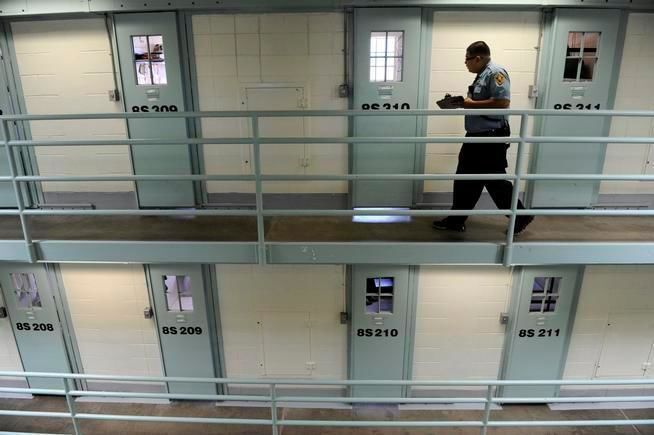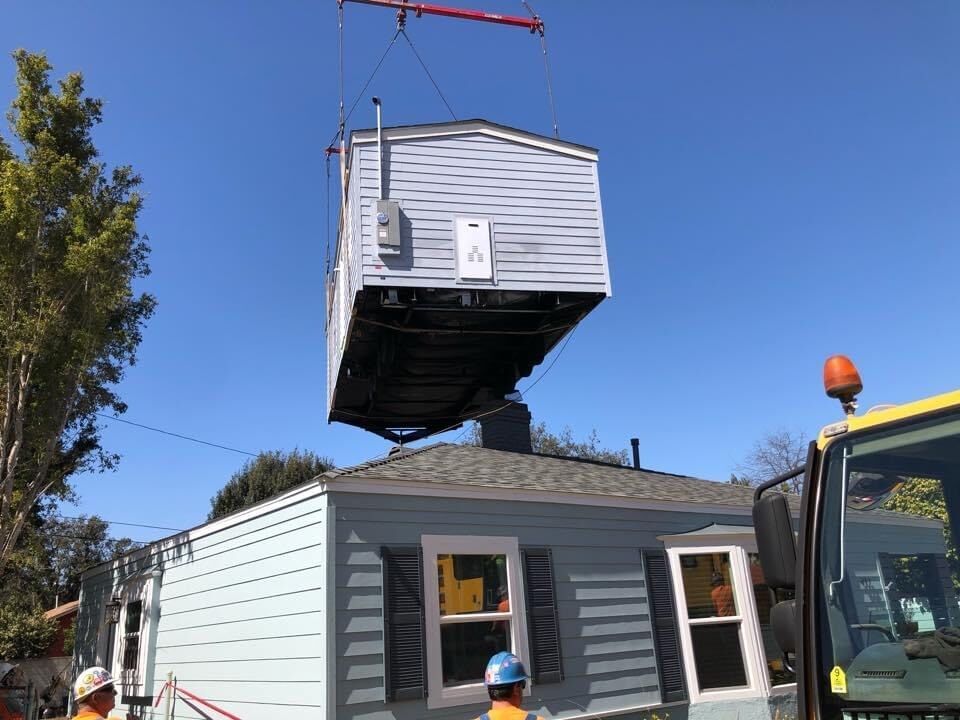Colorado’s prison population management plan activated due to overcrowding

Ongoing issues within the Colorado Department of Corrections have prompted the state to trigger its Prison Population Management Measures — a policy framework established in 2018 to address overcrowding. It marks the first time the measures have been put into effect.
Under the law, the governor must implement the management measures if the state’s prison vacancy rate stays below 3% for 30 consecutive days, a threshold that was met on Aug. 16.
The issue of overcrowding in the state correctional facilities has been a growing concern for months, with county sheriffs sounding the alarm in May over the shortage of prison beds, leading to increased strain on local jails.
Facing a budget shortfall of over $1 billion, state lawmakers this year made the decision to eliminate about 300 beds from corrections’ facilities. While funding was approved to reopen 100 of those beds starting in July, law enforcement and criminal justice reform advocates argue it won’t be nearly enough to address the backlog.
While the PPMM will help to alleviate some of the pressure on DOC by allowing for the early release of certain eligible inmates, there’s a possibility that DOC could be looking to build a new prison, despite the fact that the state is still reeling from the impacts of federal funding cuts and a $1 billion hole in its own budget.
‘We are sending people back to prison who are not dangerous‘
Kyle Giddings, executive director of the Colorado Criminal Justice Reform Coalition, believes there are several reasons why the state’s correctional facilities are seeing their lowest vacancy rates in years, but argues that one of the top contributors are technical parole violations.
According to the coalition, the number of people who have been incarcerated for technical parole violations — non-criminal infractions that violate parole conditions, such as failing a drug test or missing an appointment with a parole officer — has increased by 20%.
“We are sending people back to prison who are not dangerous,” said Sen. Judy Amabile, D-Boulder, a leading voice on criminal justice reform in the legislature and a member of the Joint Budget Committee. “There’s a wide variety of technical parole violations, but sometimes they can be really inconsequential things, and people still end up back in DOC.”
Giddings believes the rise in incarcerations for technical parole violations is due to an increased desire among law enforcement to appear “tough on crime” amid widespread reports that Colorado is one of the least-safe states in the country.
“There’s always been consequences for technical parole violations, but seeing this many people go back is pretty crazy,” he said.
When asked to comment on the increase in jail time for technical parole violations, DOC spokesperson Alondra Gonzalez sent the following statement: “A TPV is a violation of the specific conditions of parole supervision, which are ordered to protect public safety and support an individual’s successful reentry.
Incarceration for a TPV is not an automatic outcome and is used as a last resort after a series of graduated sanctions have been ineffective. State law requires parole officers to make an arrest and file a complaint with the Parole Board for certain high-risk violations, such as absconding from supervision or tampering with a GPS. In those cases, parole officers have no discretion. Even then, the final decision to revoke parole and return someone to prison is made by the Colorado Board of Parole after a formal hearing.”
Gonzalez also said technical parole violations actually “remain below historical highs,” referencing numbers from 2024, when about 0.9% of the total DOC population under parole supervision were incarcerated for a technical parole violation.
State is ‘at a crossroads’ with its prison population
Amabile, who has served in the legislature since 2021, says she’s noticed a shift in many of her colleagues’ attitudes on crime.
“It used to be that we were trying to reform our criminal justice system, and there are some of us who still think that way, but that’s not as popular now as it once was,” she said.
The DOC’s overall prison population has actually remained steady over the last five years, but its budget has increased from about $809 million 10 years ago to over $1 billion. There are a few reasons for that, Amabile explained, including increases in staff pay, inflation, and increased spending on health care due to an aging prison population.
The most recent DOC data shows that nearly one-quarter of DOC inmates are over 50 years old. “Think back to the 80s with all these ‘tough on crime’ initiatives where they were keeping people in prison for a very long time, and now those people are getting older and getting sick,” said Giddings. “That’s making the budget balloon and is a problem that needs to be addressed.”

According to a 2022 report by the General Assembly, older inmates are the fastest-growing age group within DOC, and 70% of inmates over 70 have chronic health conditions.
While the increased DOC budget is understandable given this context, Giddings and Amabile say they aren’t able to justify building a new facility, especially in light of the state’s current fiscal woes.
According to news reports, the most recently-built DOC facility, Hudson Correctional, cost $90 million to build in 2009. Adjusted for inflation, that would be about about $135 million today.
Amabile put it bluntly: “We don’t have any money. We’re in a real budget situation, and obviously we don’t want to release dangerous people out onto the streets, but if we have people in DOC who are not dangerous, then we should be trying to figure out ways to get them out to a safe setting. We do not need to build a new prison or open up more private prison beds or any of that. Other states are doing a way better job than Colorado in terms of how they’re managing their prison population.”
Giddings said the state is at a “crossroads” with both its prison population and its budget.
“We had to choose this year to either fund teachers, health care, or prisons, and it was clear the governor is choosing to fund prisons over higher education or Medicaid,” he said, adding that the coalition is putting together a bipartisan group to introduce legislation they hope will address some of the problems within DOC.
When asked about the possibility of building a new prison, the DOC provided following statement: “The CDOC does not make a final decision to fund or construct a new facility. That authority rests with the General Assembly, which would weigh such an investment against all other state budgetary needs. The CDOC is still examining all options to meet demand, and no formal request has been made.”
Another factor driving overcrowding in DOC facilities is a lack of alternative placements for recently-released inmates. While the state sometimes grants “compassionate release” to elderly or sick inmates, most of the state’s nursing homes refuse to take them in, Amabile said. She tried to run a bill last session that would have allowed the state to conduct a study on the feasibility of using a shuttered retirement home to house former DOC inmates, but says she couldn’t get backing JBC colleagues.
Inmates who are released on parole or probation rather than compassionate release can stay at community corrections facilities, which are run by the Department of Public Safety. The facilities offer educational and employment opportunities, as well as treatment for mental health conditions, if applicable. However, Amabile said, community corrections facilities have the right to refuse to serve any individual, and she believes they are abusing that right.
“Some of them are hardly taking anybody,” she said. “We should try to figure that out so more people could leave DOC and go into community corrections.”
Measures will ‘help take some of the pressure off’
In May — the same month the sheriffs issued their plea to solve the overcrowding problem at the state’s county jails — a state audit revealed that inmate populations in DOC had exceeded projections. By June DOC facilities had 551 inmates in need of placement, but only 444 available beds. At one point the vacancy rate fell below 2%, but according to the law, the management plan can only be activated if vacancy rates hit below 3% for 30 consecutive days.
“If the vacancy rate rises above 3% at any given point, the 30 day countdown stops, and if it dips back below 3% that 30 day countdown would restart,” said a spokesperson for Gov. Jared Polis. “It’s a simple calculation in law and not up to the governor.”
Giddings says he believes the management plan will “help take some of the pressure off” DOC facilities, but believes it won’t do much to solve what he believes to be a failure of the system.
“We need to figure out a way to deal with the fact that the largest population going to prison right now are technical parole violations; these people are not committing new felonies,” he said.
When asked what can be done at the legislative level to resolve the issue, Giddings said CCJRC and several lawmakers had tried something last session, but they weren’t able to get the DOC or the Governor on board.
That measure, House Bill 1214, would have changed parole considerations for individuals charged with lower-level felonies — a small but meaningful change, Giddings said.
While the bill passed through its first chamber successfully, it fizzled out in the Senate due to objections from Polis and DOC.
“I wish we knew why the Governor opposed it and did everything he could to stop it, but we’re gonna keep pushing because this won’t just benefit those who are in the justice system, it will also benefit those who work in the criminal justice system: the courts, the parole offices, and the guards inside of the corrections facilities,” Giddings said.
When asked why he didn’t support the bill, Polis sent the following statement:
“I was concerned that the bill hurt public safety. I am committed to protecting Public Safety and ensuring that those who commit crimes are held responsible and not left wandering our communities if they pose a risk to others or themselves. I am supportive of reforms that protect public safety and do not put dangerous individuals back into our community through probation or parole before they are ready to be a safe member of society.”
According to the governor’s office, the Colorado Department of Public Safety, the Organization for Victim Assistance, and the organizations representing the state’s police chiefs and county sheriffs also opposed the bill due to concerns that it would put more individuals convicted of “serious crimes” back into communities.
The Joint Budget Committee will be meeting on September 22 to hear DOC’s request for $2.8 million in supplemental funding for additional prison beds.
















